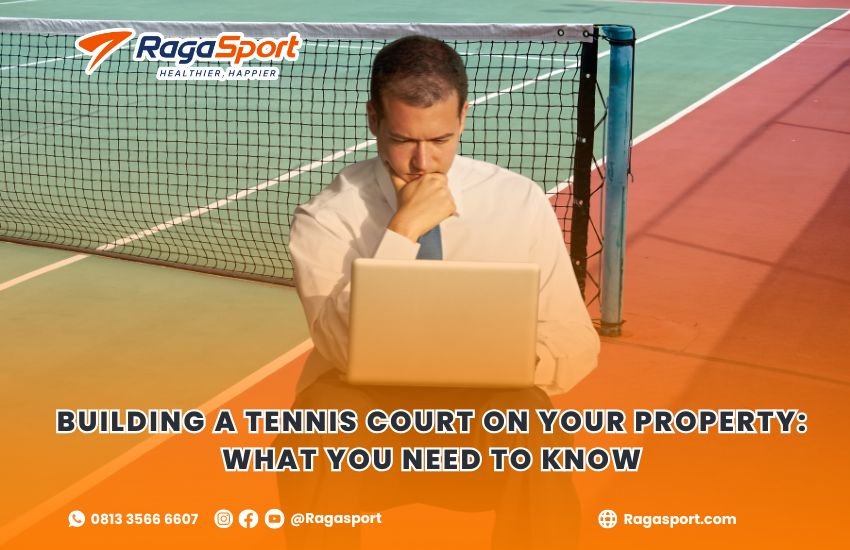Building a tennis court on your property is a valuable investment that can enhance your lifestyle, increase property value, and provide endless hours of recreation. Whether you’re a passionate player or planning to host friends and family, having a private tennis court is both a luxury and a long-term asset.
However, the process involves careful planning, budgeting, and coordination with professionals. This guide will walk you through everything you need to know to make your project a success.
Table of Contents
1. Determine Feasibility and Local Regulations
Before you break ground, it’s essential to determine whether your property can legally and practically accommodate a tennis court. Here’s what to consider:
- Zoning Laws: Check local regulations and homeowner association (HOA) rules regarding sports structures.
- Space Requirements: A standard tennis court (including runoff areas) requires at least 60 feet by 120 feet of flat space.
- Permits: Most municipalities require a building permit, especially if lights, fences, or excavation are involved.
Hiring a professional who understands local construction codes can help you avoid legal issues and costly delays.
2. Choose the Right Location on Your Property
Once you’ve confirmed the legal feasibility, the next step is choosing the right location. Important factors include:
- Sun Orientation: Ideally, courts should be oriented north-south to minimize sun interference.
- Drainage and Terrain: The ground must be level with proper drainage to avoid water accumulation.
- Accessibility: Consider ease of access from your house or driveway, as well as nearby utilities for lighting or irrigation.
If the terrain isn’t level, grading or retaining walls may be needed, which will add to the overall cost.
3. Select the Surface Type
The surface you choose affects gameplay, maintenance, and budget. Here are the most common types:
- Hard Court (Acrylic): Durable and low maintenance, with medium ball bounce.
- Clay Court: Softer on joints, but requires regular upkeep.
- Grass Court: Classic look and feel, but high maintenance and less weather-resistant.
- Artificial Turf: Offers cushioning and aesthetics, with lower maintenance than real grass.
Hard courts are the most popular for residential use due to their durability and ease of care.
4. Plan the Construction Budget
Building a tennis court on your property involves several cost factors:
- Site preparation and excavation
- Base and surface materials
- Fencing and lighting
- Drainage systems
- Net systems and accessories
In general, a residential court can cost between \$25,000 and \$100,000 depending on the features and materials used. Indoor courts or courts with advanced lighting systems may exceed this range.
Always get a detailed quote from a licensed contractor to understand the full scope of the project.
5. Consider Additional Features
A tennis court can be as simple or as luxurious as your budget allows. Popular add-ons include:
- Lighting: For evening play, energy-efficient LED lights are ideal.
- Fencing: Chain-link or mesh fencing keeps balls contained and adds security.
- Windscreens: Improve play conditions and add privacy.
- Seating and Shade: Benches, canopies, or gazebos enhance comfort.
- Multi-sport lines: Paint additional lines for basketball, pickleball, or futsal.
These enhancements not only improve functionality but also boost property aesthetics.
6. Hire a Professional Court Builder

This is arguably the most important step. While DIY kits exist, tennis court construction involves precise measurements, drainage engineering, and specialty surfacing.
A professional builder like Raga Sport brings:
- Expertise in tennis court dimensions and standards
- Access to high-quality materials
- Experience with regional soil and climate conditions
- Turnkey project management from design to final coating
Working with a trusted contractor ensures your investment lasts for decades with minimal repairs.
7. Understand Maintenance Requirements
Even private tennis courts require upkeep to remain in playable condition:
- Hard courts should be cleaned regularly and resurfaced every 4–6 years.
- Clay courts need daily sweeping and weekly rolling.
- Grass courts must be mowed often and protected from overuse.
- Drainage must be inspected annually to prevent water damage.
With proper maintenance, a well-built tennis court can remain functional and beautiful for 20–30 years.
8. Evaluate the Return on Investment
Building a tennis court on your property is more than just a personal luxury—it can increase real estate value, particularly in high-end markets. Homes with private courts are appealing to active buyers or those looking for resort-style living.
Additionally, it offers intangible returns such as:
- Health and wellness benefits
- Family bonding and social entertainment
- Safe recreational options close to home
In short, it’s an investment in your lifestyle, well-being, and long-term property appeal.
9. Timeline and Project Phases
Most residential tennis court projects take 6–12 weeks from planning to completion, depending on weather, approvals, and complexity. A typical timeline includes:
- Site analysis and permits
- Excavation and leveling
- Base layer and drainage installation
- Surfacing and painting
- Installation of fencing, lighting, and net system
- Final inspections and testing
Working with experienced professionals ensures each phase runs efficiently and meets required standards.
10. Start Your Tennis Court Project Today
Building a tennis court on your property is a dream worth pursuing—with the right team and planning, it can become a lasting legacy.

Let Raga Sport Help You Build the Perfect Court
Thinking about building a tennis court at home? Raga Sport is your trusted partner for premium sports construction. We specialize in designing and constructing high-quality tennis courts tailored to your space, budget, and vision.
👉 Visit RagaSport.com to see our latest projects and get inspired.
📞 Have questions? Contact us via WhatsApp to speak with our team and receive a free consultation today.

